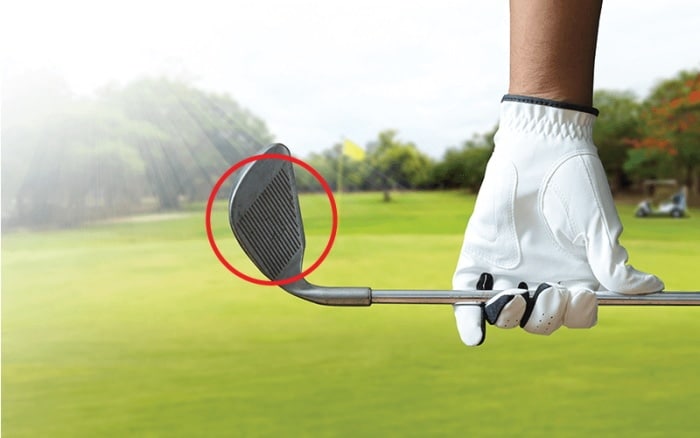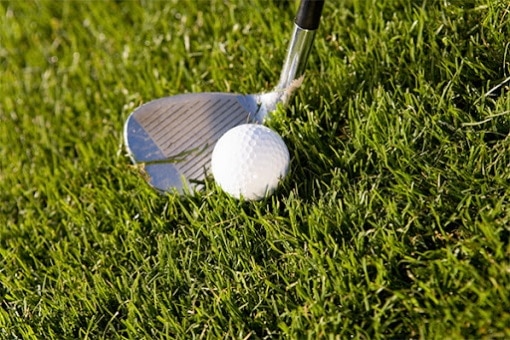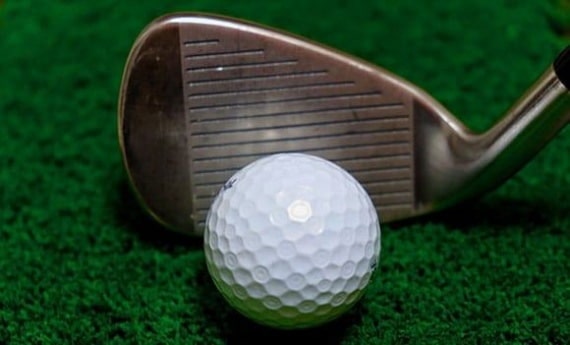Golf is a fascinating sport in which you must understand all the intricacies to become a competent player.
Although golf appears to be a simple game, becoming a good player requires practice and good equipment status. So, how to sharpen grooves on golf clubs?
The wedge grooves will begin to wear down very quickly. You may have never considered sharpening grooves before, but worn grooves can not provide you with the backspin or control you desire.
In this article, we will show you how to sharpen grooves on a golf club correctly. Let’s check it out!
How To Sharpen Grooves On Golf Clubs
Repairing your club’s grooves is a straightforward process with the right equipment, which takes less than ten minutes.
To do so, grab the sharpeners and slide them back and forth across the grooves.
You can rely on the instructions in the video below to better understand the method to sharpen grooves on golf clubs.
Step 1: Wipe Down The Club’s Face
Scrub with a scouring brush with soapy, warm water (some drops of dishwashing liquid would be enough). You must remove as much trash as possible from between the grooves.
Step 2: Keep The Club’s Face Safe
It is a crucial step because you will want to keep the sharpener from sliding on the club’s face.
To protect it, place two electrical tape pieces at each end of the grooves. Then, when moving the sharpener up and down, the tape appears to pause and protect it.
Step 3: Re-Grooving
Start by drawing the sharpener through the groove on the golf clubs at a 40-degree angle. Start with slight pressure and maintain that angle during the first ‘draws’ through the tracks.
You will develop a feeling for it as you go along, but do not go all out at first unless you’re familiar with the procedure.
Step 4: Alter The Sharpener Angle
If necessary, alter the sharpener angle, making it more vertical. This will aid in re-creating the grooves’ natural depth from when the clubs were brand new.
In addition, your sharpener has a limiter that prevents it from going too deep.
Step 5: Lubricate
If your groove sharpener is stuck a little, you may apply lubricating oil to assist the operation.
You can use WD-40 and mild cooking oil; both will create excellent results. Using a towel, wipe away any extra lubrication.
The 5 Best Golf Club Groove Sharpeners
#1. PAR 70 X6
This groove sharpener functions well, owing to the firm cutting edges. In addition, it sharpens the widgets’ grooves perfectly without lubricating oil, no matter how worn your wedges are.
This is because of your countless bunker play and practice sessions on your course.
In addition, you can generate more spin with improved roll tracking after sharpening by this PAR 70. As a result, you won’t have to use a harsh brush any longer.
Key features:
- Golf wedges are re-grooved to add additional spin
- Made from vacuum-heated steel with a maximum hardness
- There are six groove cutters
- The rubber handle is soft and straightforward to grip
- Follow the USGA and R&A regulations
#2. X-CELLENT Golf Club Groove Sharpener
Indeed, a cost-effective instrument for restoring the quality of your wedges, either they have U-grooves or V-grooves. Throughout the long term, assistance like this will undoubtedly save money.
It’s powerful enough to clear dull grooves but does not cause any severe harm.
This X-CELLENT sharpener, with its solid steel tip, re-grooves the grids to dramatically enhance backspin, regardless of any golf club brand you are playing.
Key features:
- With a protective cap, it is light and small
- Sharpening and cleaning are made easier with the anti-slip grip
- For longevity and rapid, effective re-grooving, use a super-duper steel stip
#3. Bulex Golf Sharpener
Bulex should be your first choice if you want to reintroduce a significant golf ball backspin quantity into your play.
It works well while also removing minor scratches and nicks caused by roots, pebbles, and other foreign objects.
It’s a handy little device that breathes new life into your irons or wedges’ grooves. As a result, you can create the most beneficial backspin even if you don’t have many retired golf clubs.
Key features:
- For maximum cutting performance, use high-quality, thermal steel
- Compact, well-made, and transportable
- U-grooves and V-grooves
#4. nU Groove Sharpener
You will find this helpful gadget if you play golf frequently. The nU Groove Sharpener is not overly harsh, yet it is powerful enough to restore dull, old, and worn grooves.
Many people have used it on wedges as well as any other clubs.
To sum up, with the assistance of this sharpener, it is possible to get a more excellent spin lawfully. That has been heat-treated to give it the necessary firmness for cleaning golf clubs.
Key features:
- Both powerful and delicate while cleaning to avoid damage
- Anti-slip slip has a cross-hatch pattern for ease of usage
- Heat-treated to provide the required amount of firmness for cleaning
- It comes with a safe end cap
#5. HIFROM Groove Sharpener
This is a must-have item if you desire to attempt everything under your power to enhance backspin and ball control. In addition, this sharpener is the most user-friendly and portable.
Its durability is excellent; you can see through the use of high-quality material and careful manufacturing. Furthermore, the surface roughness provides a secure, non-slip grip while polishing clubheads.
Key features:
- V-shaped and U-shaped grooves
- The shaft has a non-slip material that makes it easy to grasp
- The metal structure that has been vacuum heat-treated and is of high quality
Frequently Asked Questions
Here are some frequently asked questions we have collected while researching this field.
Is It Illegal To Use Groove Sharpeners?
The sharpeners for grooves tread a very tight line. They are legal to use, but you must be careful to prevent being disqualified from the game.
The most important thing to know is that a player cannot modify the groove contour. It may be against the law. You can use a sharpening if you are cautious not to alter the form.
It is not a good idea to use a groove sharpener while competing in a competition, as the tiny print may state that you cannot.
Therefore, before using it, make sure you read the tournament instructions well.
Can I Use Handmade Sharpeners For Sharpening The Grooves?
There are several methods for sharpening the grooves. However, many golfers believe that purchasing a suitable grove sharpener to aid in the sharpening of wedges is entirely unnecessary.
Sharpening the edges might be done with a basic screwdriver. The screwdriver’s head is sturdy and sharp, so select one that fits into your wedges’ grooves.
Others have suggested straightening the grooves on wedges and irons with a nail file. Even while it is gentler than the head of a screwdriver, it may provide identical effects.
In some situations, a nail filing tool may be a superior alternative.
However, you could probably get this to function with any device similar to the sharpener, as long as the tool fits appropriately and is sharp enough.
When utilizing these DIY ways to sharpen the grooves, it’s essential to use caution. Remember to try any DIY techniques a few times before the game.
How To Use A Screwdriver To Sharpen Grooves?
Many individuals question whether or not purchasing a groove sharpener is required.
However, many have discovered that utilizing some everyday household items, like a screwdriver, might assist them in completing the task.
A basic flat-head screwdriver, which must be not too small or big for the groove, is ideal for sharpening.
Grab the sharpeners and slide them back and forth across the grooves carefully.
This way is a simple method to sharpen them without exerting much effort.
How Often Should Your Wedges Be Sharpened?
There is no set length of time for sharpening your grooves.
However, sharpening grooves should probably not be made with frequency since it’s such a flawed process that you must notice that you must not damage it by overdoing it.
It would be best to do it whenever you observe substantial dulling to generate minimal friction between the ball and the club.
Even then, please double-check that you are merely restoring the groove length and the sharpness to their previous state.
Conclusion
To guarantee that your irons and wedges perform effectively in tournaments, you may need regrooving.
While you should get your clubs polished by a professional, it is possible to sharpen them yourself.
You should also carefully read the instructions since these items might differ significantly.
After reading this article, we hope you better understand how to sharpen grooves on golf clubs correctly.
Thank you for reading!



